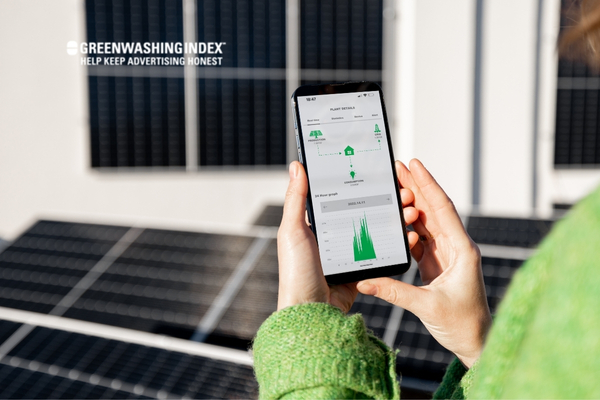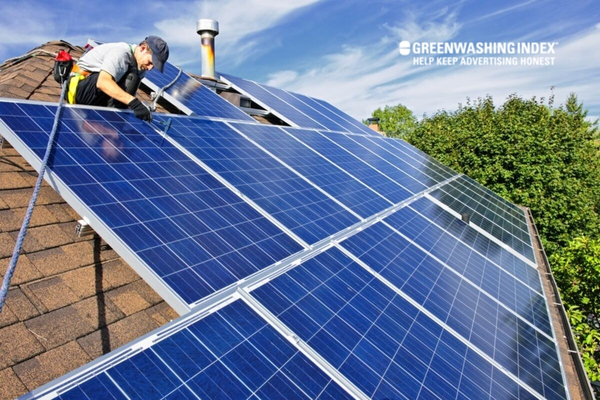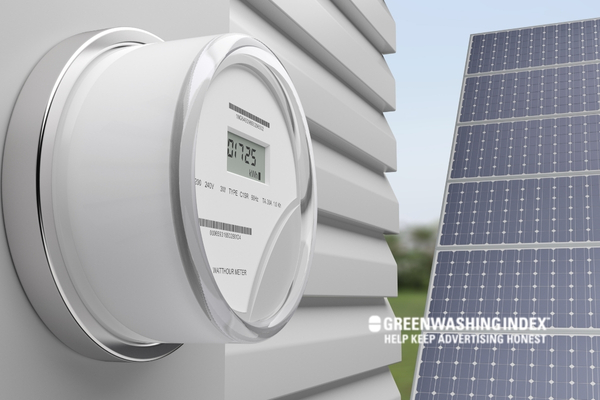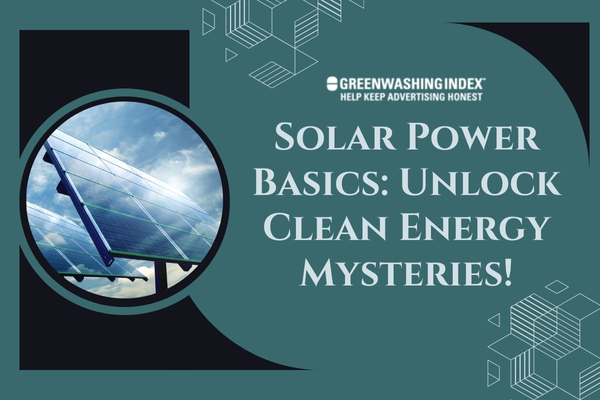Have you ever wondered how sunlight turns into the electricity that powers our homes? The secret lies within solar power basics, a clever way to harness our sun’s endless energy.
Imagine a world where your electricity bill nearly vanishes and your home runs on the power of a star! That’s not just science fiction—it’s reality with today’s solar technology.
So, how does solar power work? At its heart is the photovoltaic effect. When sunlight hits your rooftop solar panels, it stirs up energy in the panel’s cells—kind of like waking up sleeping bees.
These “awakened” particles create an electric current that flows through wires and meets all your energy needs. It’s as if you have your own personal powerhouse silently hustling on your roof!
What You Will Gain From This Read:
- Understand solar power basics in simple words.
- Learn how sunshine becomes usable household energy.
- Explore options for storing solar energy when it’s not sunny.
- Compare different types of solar panels for maximum efficiency.
- Discover smart ways to save money with rooftop solar systems.
The Solar Power Basics
When I think about solar power basics, I imagine the sun reaching down to touch our lives with its rays. But how does this light turn into electricity that powers everything from a small calculator to an entire home? This magic starts with something called photovoltaic technology. It’s not really magic, of course – it’s science!

The Science Behind Converting Sunlight to Electricity
Now, let me explain in simple terms what happens when sunlight gets turned into electricity. This process is based on the “photovoltaic effect.” It might sound complex, but it’s pretty straightforward once you break it down.
First off, let’s talk about what photovoltaic means. “Photo-” stands for light, and “-voltaic” refers to producing voltage or electric power. So, when we’re dealing with photovoltaic technology, we’re talking about turning light into electrical energy.
Imagine a solar panel sitting under the bright sun. Inside that panel are lots of little cells made mostly from silicon, which is a material that loves sunlight! When sunlight hits these silicon cells, a kind of dance begins: electrons (tiny particles you can’t see) get excited and start moving around.
This movement of electrons is what creates an electric current. Wires within the solar panels collect this current and send it off to be used in our homes as electricity to power lights and appliances.
So, in simple words: Sunlight hits the panel -> Electrons get excited and move, -> We get electricity.
Those are your solar power basics for turning sunlight into electricity!
Understanding Solar Panel Components and Their Roles
When looking at a solar panel up close or in pictures, you’ll notice they are shiny and often blue or black. They are made up of components working together like parts of a team – each one has its own special job:
- Silicon Cells: These are the real stars of the team. They take sunlight and turn it into electrical energy.
- Glass Casing: Above those cells sits glass casing, which protects them but also lets in all that good sunshine!
- Wiring: Hidden away under those cells, there’s wiring that takes all that electric energy being produced by excited electrons and brings it out so we can use it.
- Metal Frame: All these parts sit inside a metal frame which holds everything tight together.
Breaking down what each component does makes understanding how solar panels work feel less overwhelming:
- Silicon Cells capture sunlight.
- Glass Casing guards all those delicate cells.
- Wiring helps transport generated electric energy.
- Metal Frame keeps everything safe and secure.
By understanding these key components – silicon cells doing their sunny dance creating voltage; glass keeping them safe while letting light through; wires drawing out valuable electricity; metal housing protecting it all -, you can see how every part plays its vital role in harnessing renewable energy sources like the sun through clean energy solutions such as photovoltaics!
And just like that, step by step, I’ve walked you through some main points on how we take advantage of solar power basics—from thrilling electrons inside silicon cells all wrapped up safely under a protective glass shield supported by sturdy frames—to make clean electricity!
Also Read: Mattress Disposal: Easy Steps for Eco-Friendly Solutions
Making Sense of Solar Panels on Your Roof
Have you ever looked up at a roof covered with solar panels and wondered how those sleek, shiny surfaces are actually capturing the sun’s light and turning it into energy we can use? Well, let me take you through the basics of solar power and explain this everyday miracle without diving into hard technical jargon.

Capturing Sun’s Bounty – An Everyday Miracle
Imagine your roof wearing a hat made of solar panels. These aren’t just any hats, though. They’re made from a material called photovoltaic technology – a fancy name, I know! This technology is kind of like magic; it takes sunlight and turns it into electricity. Here’s how:
- Absorbing Sunlight: When the sun is shining, your rooftop solar panels get to work by absorbing its rays. These rays have energy that is really important for the next step.
- Generating Electricity: Inside those panels are smaller units called cells – think of them as tiny power stations. When sunlight hits these cells, they get excited (literally!) and start generating electricity in the form of direct current (DC).
- Ready for Use: The electricity generated isn’t quite ready for use in your home yet, but don’t worry – that’s where other pieces of equipment come in handy to make sure the power gets to where it needs to go.
And just like that, without any noise or pollution, your rooftop is taking advantage of one of nature’s greatest gifts: sunlight! Isn’t that something?
From Sunshine to Switch – Energy’s Path Throughout Your Home
Now, hold on tight – we’re going on a journey from your roof all the way to your kitchen toaster!
- Inverter Station: First up after generation comes conversion. The direct current (DC) from the solar cells needs to be changed into alternating current (AC) because that’s what home appliances use! It all happens in a gadget called an inverter.
- Electrical Panel Dance: After inversion, it’s time for this clean energy to boogie over to your home’s electrical panel—this panel decides where power is needed most at any moment.
- Traveling Through Wires: Now we’ve got usable AC electricity zipping through wires inside walls heading straight towards where it’s needed…ready for action!
- Meeting Home Appliances: Finally, our sunny friends greet your fridge, lights or even charge up electric car batteries—all thanks to those humble panels sitting quietly atop your home.
- Flipping The Switch: It culminates beautifully when you flip a switch or push a button on an appliance—energy literally coming from above, making things whirr and glow within our homes!
Remember this journey every time you turn on a light or start using an appliance during daylight hours—it travels quite some distance courtesy of clean energy solutions right from our rooftops! Isn’t learning about solar power basics fascinating?
Also Read: Styrofoam Disposal: Easy Ways to Reduce Environmental Impact
Storing Sunshine – Banking Energy for Later Use
When I think about solar power basics, an important part is storing that sunshine – sort of like banking energy to use later on. It’s not just about getting energy from the sun during the day but also saving some of that power for times when the sun isn’t shining. How do we do that? Well, it’s all about batteries.
Understanding Solar Battery Storage Options
There are different kinds of batteries you can use to store solar energy at home, and each type has its own good points and not-so-good points. Let’s talk about a few of them:
- Lead-Acid Batteries: These are kind of like the batteries in cars. They’ve been used for a long time and don’t cost too much. But they’re big and heavy and don’t last as long as some other types.
- Pros:
- Cheaper upfront cost
- Tried-and-tested technology
- Cons:
- Large size
- Heavier weight
- Shorter life span compared to others.
- Pros:
- Lithium-Ion Batteries: Lots of people prefer these for their solar setups at home nowadays because they last longer and pack more power into a smaller size than lead-acid batteries.
- Pros:
- Longer lifespan
- More efficient in space usage and weight
- Cons:
- It can be more expensive upfront.
- Pros:
- Nickel-Based Batteries: These aren’t as common as the first two but have their own merits, like being pretty tough.
- Pros:
- Sturdy build
- Cons:
- Harder to find
- Pros:
As with anything you buy for your home, you have to weigh these pros and cons according to what matters most for your situation, like budget or how much space you have.
Mechanisms Making Stored Sunlight Shine at Night
So how does this stored energy make our lights shine when it’s dark out? Once we’ve got our solar energy saved up in batteries during sunny days, this is what happens:
- The energy is kinda waiting in the battery until we need it.
- When there’s no sunlight or if there’s a blackout, a system called an “inverter” changes this stored battery power into electricity that our homes can use.
- This energy travels through our home’s wires just like regular electricity would.
- Even without sunshine outside, things inside work as they normally would – lights turn on, fridges keep food fresh, and TVs show all those shows people love watching.
It’s quite amazing if you stop to think about it—even when nighttime comes around, or clouds cover the sky, we can still use sunshine! This way of using clean energy solutions keeps us powered up anytime with renewable energy sources that come straight from sun rays caught during daylight hours.
Understanding these solar power basics deeply, especially storage options and how they work both day and night or during outages, gives us peace of mind—that even though the sun goes down, thanks to technology like photovoltaic cells storing its power efficiently and safely, our lives can go on glowing smoothly!
Also Read: Washer and Dryer Disposal: Eco-friendly Methods Revealed!
Maximizing Your Personal Ball Of Fire In The Sky
When I think about solar power basics, I start with knowing that the sun is like a giant ball of fire in the sky, giving us light and warmth. Now, imagine taking that sunlight and turning it into electricity to power our homes. That’s what solar panels do, but not all solar panels are the same.
Debating Panel Types – Monocrystalline vs Polycrystalline
There are two main types of solar panel technologies you’ll hear about monocrystalline and polycrystalline. Each has its own perks.
Monocrystalline Solar Panels
- Made from a single crystal structure
- They are typically darker in color, which can be either blue or black.
- These panels are known for high efficiency, meaning they convert more sunlight into electricity than other types.
- In terms of appearance, they have a sleek design, which many people like.
- However, they can also be more expensive than other options.
Polycrystalline Solar Panels
- These panels are made from multiple crystal structures.
- They tend to have a bluer hue compared to monocrystalline ones because of how light interacts with the material.
- While they might be less efficient than monocrystalline, polycrystalline panels are often more cost-effective, making them a popular choice for budget-conscious folks.
If I’m looking at efficiency factors alone, monocrystalline panels might come out on top because they often get more power from each beam of sunlight. But if my wallet is feeling light or if I need lots of panels spread across a big area, going polycrystalline could make sense.
Tips To Get The Most Out Of Your Panels
To squeeze every bit of juice out of your solar power basics setup, you need to take care of the following:
- Keep Them Clean: Just like windows, if solar panels get dirty, less light gets through. It means less electricity is being made. Simply cleaning them regularly can keep them running smoothly.
- Angle Matters: Where and how you place those shiny boards makes a big difference, too! Make sure your solar panels face towards the sun for most parts of the day—usually southward if you’re in the Northern Hemisphere and northward if you’re down south in the Southern Hemisphere.
- Shadow Check: Look around for any trees or tall buildings that could cast shadows on your panels throughout the day—shadows mean blocked sunlight!
- Regular Check-Ups: Just like visiting a doctor helps us stay healthy, occasionally checking up on your system can catch any issues early before they become expensive problems. Don’t forget to research any new tech or gadgets designed to increase solar panel efficiency—that’s always progressing!
Following these steps will help ensure that we get the most out of this renewable energy source—making it both an eco-friendly and wallet-friendly move! Investing time into understanding these tips aligns right with embracing clean energy solutions—the future isn’t just brighter; it’s also greener!
Also Read: Appliance Recycling Essentials: Master Eco-Friendly Disposal
Smart Savings with Net Metering
When I think about solar power, cost savings come straight to my mind, especially when net metering is on the table. So, let’s dive into how it makes sense for your wallet.

Hooking Up To The Grid 101
Let me explain how being connected to the public power grid can work in your favor. When you set up a solar power system at home, you might end up making more energy than you use.
Now, instead of just storing it or letting it go to waste, you have a smart option: hook up your system to the local power grid.
Why do this? It’s like having a bank account for electricity. During sunny days, if your panels catch more sunlight and make more power than needed, this excess goes back into the grid.
Your meter actually spins backward! That means you’re giving electricity to the grid and getting credits — kind of like putting money in that energy bank I mentioned.
Cashing In on Excess Production
Now let’s talk about net metering principles and how they line up cash for you:
- Excess Power = Credits: When your solar panels are basking in the sun, any extra energy they generate goes to the local electric company.
- Meter Runs Backwards: This sends your electric meter backward! Like reversing the time for your bills.
- Less Energy Used From Grid: On cloudy days or nighttime when panels sleep, use those credits instead of buying electricity.
- Monthly Statement Surprises: Any credit on what you give versus take appears on your monthly bill — now that can be a friendly reading!
One really neat thing is that some folks end with extra credits at the end of the year. If that happens, depending on where you live and your electric company’s rules, they might actually pay you cash or rollover your credits to next year.
There it is — solar panel efficiency isn’t just good for Earth; it can also be kind to our pockets thanks to renewable energy sources like the sun combined with smart systems like net metering!
FAQs
Can I store extra solar electricity?
Yes, you can store extra solar electricity using battery systems to use when the sun’s not shining.
How often do I need maintenance for my panels?
Solar panels are low-maintenance, but it’s good to check them a couple of times a year or after big storms.
Do all homes qualify for rooftop solar installations?
Not all homes are right for rooftop solar. Things like roof size, angle, and shade play a role in qualifying.
Conclusion
After exploring solar power basics, it’s clear that the sun offers us a mighty gift through its abundant energy. Converting sunlight into electricity with photovoltaic technology is not just innovative; it’s become an essential strategy in our push toward renewable energy sources.
Solar panels on roofs are changing how we view energy generation, making clean energy solutions more accessible to homeowners everywhere.
Additionally, understanding both the technology behind solar panels and smart savings like net metering can lead you to make informed decisions on using this renewable resource effectively.
Harnessing this clean power not only reduces our carbon footprint but also taps into the infinite reservoir of solar energy. By learning about storage options and utilizing panel efficiency tactics, each of us can optimize our personal slice of sunshine for daily use.
Key Takeaway Points:
- Solar power provides clean and renewable energy.
- Understanding photovoltaic technology is vital.
- Solar panel components play crucial roles in energy conversion.
- Battery storage offers reliable backup for non-sunny times.
- Choosing the right panel type affects efficiency.
- Net metering can lead to significant savings on utility bills.



